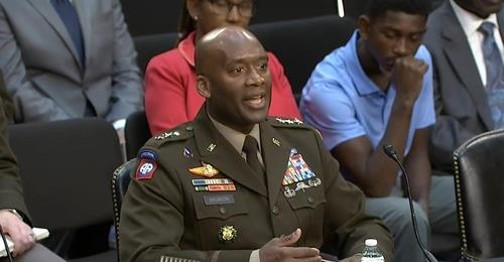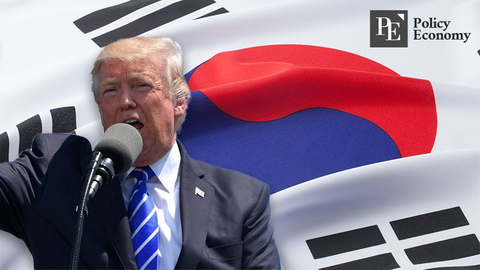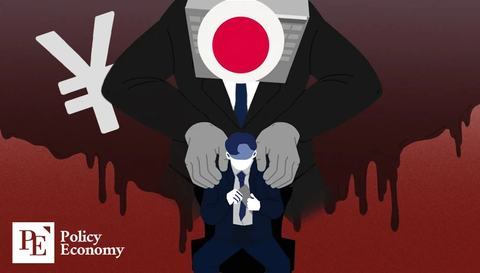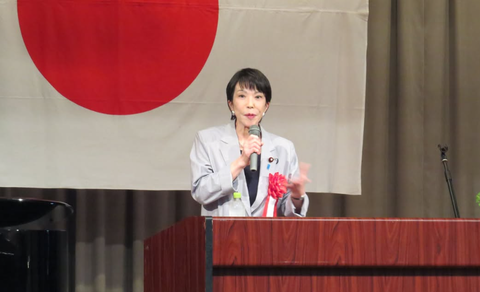U.S. Focuses Military Power on Deterring Chinese Invasion of Taiwan, Considers Relocating Some U.S. Forces in Korea to Guam
Input
Changed
WSJ: "U.S. Considering Withdrawal of 4,500 Troops from 28,500 U.S. Forces in South Korea" Top Priority is Deterring Chinese Invasion of Taiwan, While North Korea Response to Be Handled Through Allied Burden-Sharing Japan Proposes Collective Security Framework, Including 'East Asia NATO' Concept

The U.S. government is reportedly considering a plan to relocate some U.S. Forces stationed in South Korea to other bases in the Indo-Pacific region, such as Guam. This move reflects a shift in defense strategy following the inauguration of President Donald Trump. The U.S. Department of Defense is now prioritizing the deterrence of a potential Chinese invasion of Taiwan, while adjusting its strategy to delegate the response to North Korea largely to South Korea. Against this backdrop, the Japanese government has proposed integrating the Korean Peninsula and the Taiwan Strait into a single strategic theater, drawing attention to potential changes in the East Asian security cooperation framework.
WSJ: "U.S. Troop Reduction in South Korea Not Yet Officially Reported"
On the 22nd of May (local time), The Wall Street Journal (WSJ) reported that the U.S. Department of Defense is considering relocating approximately 4,500 troops out of the 28,500-strong U.S. Forces Korea (USFK) to other bases within the Indo-Pacific region, including Guam. Citing multiple officials, WSJ noted that this proposal is being explored as part of an informal policy framework for handling North Korea, and is among several ideas currently being discussed among senior officials.
This is not the first time a reduction of U.S. troops in South Korea has been considered. During his first term, President Donald Trump also weighed troop reductions as a means to pressure South Korea into increasing its defense cost-sharing contributions. However, the plan was not implemented due to opposition from within the administration, particularly from national security and military officials. WSJ clarified that no official report has yet been submitted to President Trump regarding the proposed troop reduction. The outlet added that any final decision on force levels is likely to be delayed until there is greater clarity regarding the trajectory of the war in Ukraine and the extent of future U.S. military aid to Kyiv.
The report emphasized Guam's strategic significance, describing it as a potential conflict zone that remains relatively inaccessible to Chinese military forces. For this reason, Guam is emerging as a core staging point for U.S. military personnel. Even if a portion of U.S. troops is withdrawn from South Korea, the report stressed that the forces would still remain deployed within the Indo-Pacific theater, maintaining Washington’s regional posture.

Concerns Raised Within U.S. Over Weakened Deterrence Against North Korea
However, within the U.S. government, there remains a strong consensus that any decision to reduce U.S. Forces in South Korea should be approached with caution. At a Senate Armed Services Committee hearing last month, General Paul LaCamera—also known by his Korean name, J.B. Brunson—who serves as Commander of U.S. Forces Korea and the Combined Forces Command, clearly expressed opposition to any troop withdrawal. He warned that a U.S. pullout could increase the likelihood of an invasion by North Korean leader Kim Jong-un.
When asked what strategic advantage the U.S. gains from maintaining its military presence in South Korea, General LaCamera responded that it preserves “positional advantage.” He emphasized that U.S. forces on the Korean Peninsula are stationed “where they need to be.”
Admiral Samuel Paparo, Commander of U.S. Indo-Pacific Command, echoed these concerns, stressing the importance of maintaining a credible deterrent posture. He warned that a significant reduction in U.S. troops in South Korea would degrade America’s ability to prevail in a conflict. Admiral Paparo stated that maintaining the current size and readiness of U.S. Forces Korea is critical to alliance credibility and regional stability, underscoring that the presence of these forces deters not only North Korea but also other potential threats in the region. His remarks highlighted the strategic role U.S. troops play not just in deterring North Korean aggression but also in counterbalancing China within the broader U.S.-China strategic competition.
Meanwhile, Elbridge Colby, the Deputy Assistant Secretary of Defense for Strategy and Force Development, who played a key role in shaping the Pentagon’s National Defense Strategy (NDS), offered a more nuanced perspective. While he agrees that the U.S. must continue to provide extended deterrence through its nuclear umbrella, he argued that South Korea should shoulder more of the burden in responding to North Korea’s conventional military threat.
Before being nominated for his current position, Colby stated via social media last year, “I oppose withdrawing troops from Korea,” but added, “I support refocusing U.S. Forces Korea on deterring China, while South Korea takes on more responsibility for defending against North Korea’s conventional forces.” His comments suggest a policy shift in which the U.S. military posture in South Korea is adapted more explicitly to counterbalance China, while Seoul assumes greater responsibility for conventional deterrence against Pyongyang.
Emerging Vision for a Collective Security Framework in East Asia
The Trump administration views countering China, particularly in the event of a Chinese attack on Taiwan, as the core objective of its efforts to realign military posture in the Indo-Pacific region. This strategic shift was clearly outlined in a nine-page "Interim National Defense Strategic Guidance" document, which U.S. Secretary of Defense Pete Hegseth distributed internally at the Pentagon this past March. According to the document, the primary goals of U.S. national security policy are to prevent a Chinese invasion of Taiwan and to defend the U.S. homeland. The guidance reportedly also states that “other threats, such as North Korea, should be handled as much as possible by regional allies and partners.”
Historically, the United States has regarded the Korean Peninsula and the Taiwan Strait as separate theaters of operation: U.S. Forces Korea (USFK) has been responsible for the former, while U.S. Forces Japan (USFJ) has overseen the latter, including the East China Sea. Likewise, East Asian nations have traditionally hesitated to build collective security frameworks, due to historical animosities, differing threat perceptions, and divergent security interests. Instead, most countries have relied on bilateral alliances with the U.S. For example, there has long been a prevailing view that South Korea would find it politically and practically difficult to defend Japan in the event of an attack by China, and vice versa.
However, Japan has recently proposed a strategic integration of the Taiwan Strait and the Korean Peninsula into a unified defense theater. This vision aligns with Prime Minister Shigeru Ishiba’s “Asian NATO” concept and the Japanese Defense Minister’s proposal for “theater integration.” Modeled after NATO’s collective response to Russia’s invasion of Ukraine, Japan’s strategy seeks to establish a joint deterrence mechanism against China, Russia, and North Korea.
Experts suggest that if this concept becomes reality, it would represent a pivotal turning point in diplomatic, security, and military relations between Japan and South Korea. Such a transformation could reshape the regional security architecture, enhancing collective defense capabilities while also redefining the traditional bilateral structure of U.S.-led alliances in East Asia.





















